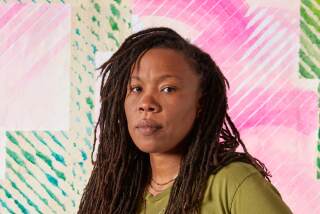Benny Andrews, 75; painter whose work was inspired by his youth in the segregated South
- Share via
Benny Andrews, a painter and teacher whose work drew on memories of his childhood in the segregated South, died Friday of cancer at his home in Brooklyn, N.Y., his wife, Nene Humphrey, said. He was 75.
Andrews painted socially conscious works that addressed issues such as the civil rights movement, the Holocaust and the forced relocation of Native Americans. Even in an era dominated by abstract art, he exhibited his work in galleries and won awards and prizes, including a National Endowment for the Arts Fellowship in 1974.
His work is part of the permanent collections of the Museum of Modern Art, the High Museum of Art in Atlanta, the Hirshhorn Museum in Washington, D.C., and the Ogden Museum of Southern Art in New Orleans, among others.
Andrews was born in Madison County, Ga., in 1930 into a family of sharecroppers. He was the second of 10 children who all worked in the cotton fields. His paternal grandfather was a white plantation owner and his paternal grandmother was black and Cherokee, resulting in Andrews’ blue-eyed, light-skinned African American features.
“This ethnic mix makes me get beyond racism,” Andrews told the Hartford Courant in 1994. “I see why racism happens. It has to do with the fact of someone seeing someone else as different. Since I’m both, I can see beyond that.”
Andrews’ father, George, was a self-taught folk artist. Though the family was poor, the children were encouraged to read, draw and paint. While Benny gravitated to the visual arts, his brother Raymond became a writer.
Few children of black sharecroppers attended high school in Madison County, but Andrews was freed from his duties in the cotton fields during wintertime. In 1948 he became the first member of his family to graduate from high school.
He won a two-year scholarship to what is now Fort Valley State University and, according to the Atlanta Journal-Constitution, took art appreciation, the only art course the college offered, six times.
He served in the Air Force from 1950 to 1953 and used the GI Bill to attend the School of the Art Institute of Chicago. Andrews preferred representational art to the Abstract Expressionism that was being taught in the 1950s.
“Needless to say, in the eyes of the school I was a total failure, and I found that very easy to live with; in fact, I gained a certain amount of strength from the academics’ utter dislike of what I chose to do,” he told an interviewer years later.
He moved to New York in 1958 and had his first solo exhibition at Forum Gallery in 1962.
He made collages, paintings, drawings and book illustrations, taking particular pleasure in his work for children’s literature.
Andrews taught art at Queens College from 1968 to 1997 and established an art program in New York state’s prison system. He traveled to the Gulf Coast this year to work on an art project with children displaced by Hurricane Katrina.
In addition to his wife, also an artist, Andrews is survived by three children and four grandchildren.
More to Read
The biggest entertainment stories
Get our big stories about Hollywood, film, television, music, arts, culture and more right in your inbox as soon as they publish.
You may occasionally receive promotional content from the Los Angeles Times.










